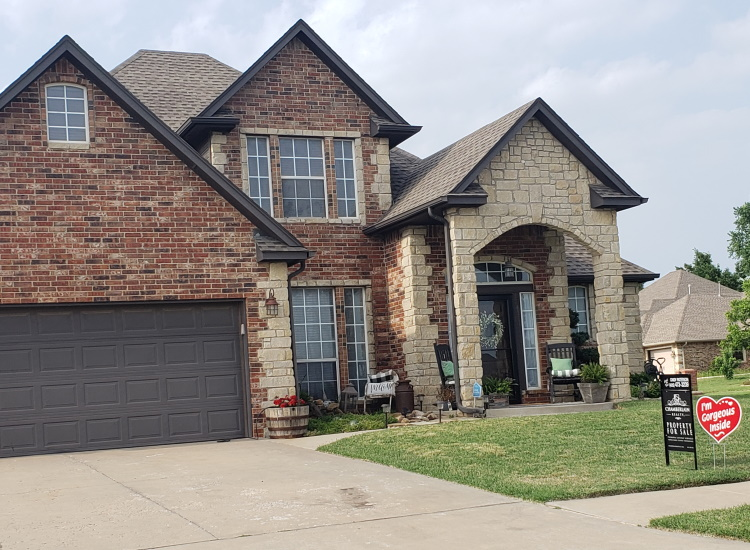Payroll
Housing Market Remains Competitive Despite Increase in Mortgage Rates
Zillow's home value forecast now calls for 11.6% growth through April 2023, down from a year-ahead forecast of 14.9% made in March. Zillow's forecast for existing home sales has been lowered as well, now predicting 5.73 million sales in 2022.
Jun. 02, 2022

The housing market is as competitive as ever, according to the latest Zillow Real Estate Market Report. Buyer demand has been strong enough to keep the market moving at a record pace, even after a massive spike in mortgage rates.
Year-over-year home value growth set a record for the 13th consecutive month in April. The typical U.S. home is worth $344,141, 20.9% higher than a year ago. That record pace of growth comes despite rising mortgage rates eating away at what home buyers can afford. The monthly mortgage payment on the typical U.S. home is 11.7% higher than it would have been in March, and 52.5% higher than a year ago, assuming a 30-year mortgage with a 20% down payment.
“We do expect the market to begin rebalancing this spring as rising costs keep enough would-be buyers on the sidelines for inventory to begin catching up with demand, but we have not yet reached that point,” said Nicole Bachaud, Zillow economist. “Nearly half of homes are selling above their list price, and April sales happened as fast as we’ve ever recorded. It may very well be that fewer people are trying to buy, but with bidding wars continuing to drive up prices on limited inventory, those in the market today likely won’t feel much relief.”
To keep monthly mortgage costs the same as they would have been a year ago, today’s buyers must shop in a different price range. According to estimates from Zillow’s mortgage calculator, a buyer who can afford a monthly mortgage payment of $1,500 could have paid roughly $340,000 for a house a year ago, when mortgage rates were much lower. Today, that $1,500 monthly payment could buy a house worth about $275,000. And that is before factoring in home value growth of more than 20% during that time; a buyer would have paid about $227,500 a year ago for that $275,000 home.
Rising costs have not yet eased competition. Homes that sold in April typically went pending after only seven days, tying a monthly record set last May and June. To put that remarkable market speed into perspective, in April 2019, the last spring before the pandemic, the typical home sat on the market for 24 days before an offer was accepted.
Nearly half (48%) of homes that were purchased in March — the latest data available — sold for more than the asking price, indicating the buyer expected multiple bidders. That’s up from 37.5% in March 2021. More than three-quarters of homes are selling above list price in the country’s most competitive markets: San Francisco (80.4%), Seattle (77.3%) and San Jose (76.1%).
Faint signs are starting to emerge that a more balanced market is around the corner. The share of listings with a price cut crept up to 9.1%, higher than 8.6% in March and 7.8% last April. That may be a sign that sellers cannot be quite as ambitious in their pricing strategy as they could have been in recent months.
Inventory continues to rise as well, up 5.5% from March — the second straight month of growth. The year-over-year inventory deficit has also shrunk in each of the past three months, now sitting at -19.5%.
More inventory is both the consequence and the cause of a more balanced housing market: It limits the number of buyers bidding on each home as there are more to choose from, and it prompts sellers to price their home competitively.
Zillow’s home value forecast now calls for 11.6% growth through April 2023, down from a year-ahead forecast of 14.9% made in March. Zillow’s forecast for existing home sales has been lowered as well, now predicting 5.73 million sales in 2022. That would mark a 6.4% decrease from 2021. Spiking mortgage rates, inventory gains, and lower-than-expected pending home sales and mortgage application data drove the downward revision.
These downwardly revised projections would still represent a very strong housing market in the coming year. Other than this recent run of record-breaking home value growth, only during a short stretch in 2005 have home values grown faster than 11.6% annually in the history of the Zillow Home Value Index. And while 5.73 million existing home sales would be a decrease from a remarkably strong 2021, that would mark the second-best calendar year total since 2006.
The pace of annual rent growth slowed for the second consecutive month. Rents are up 16.4% year over year, down from 17% annual growth in March. The typical U.S. rental unit costs $1,927 a month.
